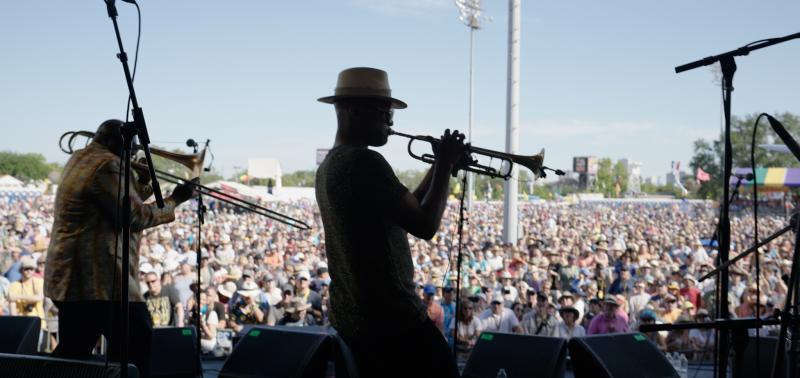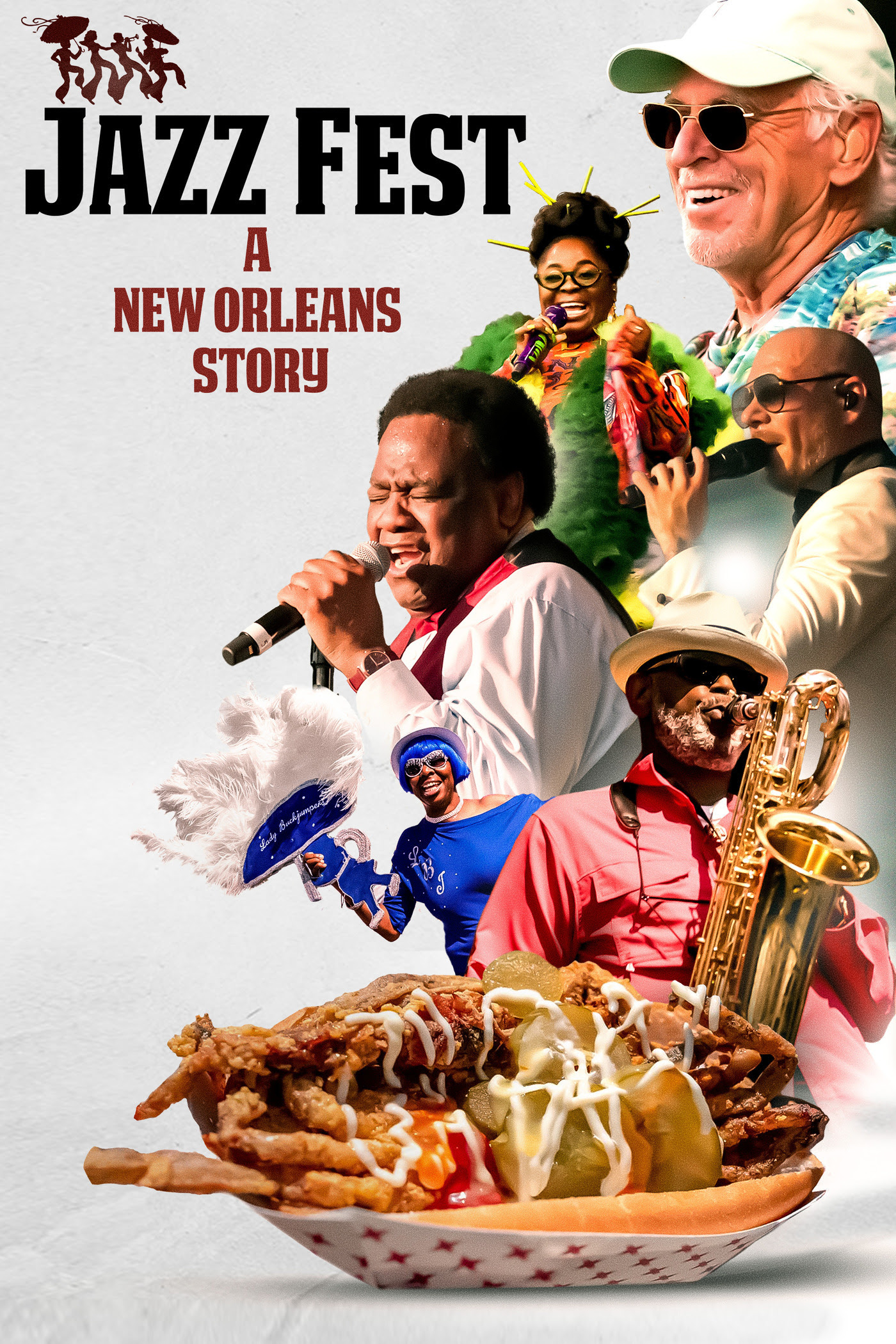DVD: Jazz Fest - A New Orleans Story | reviews, news & interviews
DVD: Jazz Fest - A New Orleans Story
DVD: Jazz Fest - A New Orleans Story
The city's culture revealed through the prism of a 50-year-old institution

New Orleans “is not a music business city, it’s a music culture city,” says David Shaw of The Revivalists, one of the interviewees in Jazz Fest: A New Orleans Story.
This documentary sets out to describe that multiracial culture and heritage through the particular prism of the New Orleans Jazz & Heritage Festival, known as “Jazz Fest”, which is held on the last weekend in April and the first weekend in May. It had a celebratory fiftieth anniversary edition in 2019 before being forced to close for two years by the pandemic.
The film does a good job of explaining the festival’s story through the half-century of its existence with a combination of up-to-date interviews and archival footage. The copious live music clips from the 2019 festival portray reveal the breadth of the programming and how vivid and atmospheric an event it is.
Directed by Frank Marshall and Ryan Suffern, Jazz Fest can simply be enjoyed as an ever-shifting cavalcade of music, from jazz and gospel to rock and rhythm and blues, the performers ranging from Earth, Wind & Fire and Katy Perry to the late B.B. King.
 The curious, however, will find it also goes deeper. Puzzled by Cajun music versus Zydeco? Or by what a vest frottoir/rubboard is? The answers are here. For an unexpected treat, the list of menu items in a ten-minute section on the food served at the festival could easily send one down several culinary research rabbit holes. There is even a section showing an incongruously quiet corner of the festival inhabited by some serious model boat builders.
The curious, however, will find it also goes deeper. Puzzled by Cajun music versus Zydeco? Or by what a vest frottoir/rubboard is? The answers are here. For an unexpected treat, the list of menu items in a ten-minute section on the food served at the festival could easily send one down several culinary research rabbit holes. There is even a section showing an incongruously quiet corner of the festival inhabited by some serious model boat builders.
A theme that comes across strongly is the consistency of the vision underlying the festival since its start in 1970, and the way that ideal has been maintained. George Wein, who had founded the Newport Jazz Festival, was hired to design and produce a festival in New Orleans. His vision was that New Orleans is the “only city with a unique culture that belongs to itself”, and his mission was to present musicians who could portray its heritage.
The late Ellis Marsalis explains that his early role was to introduce Wein and his team to good local musicians. Wein brought Mahalia Jackson to perform at the first festival less than two years before she died; she performed for just 350 people. But then the event started to grow. “I knew that we had something special”, says Wein. He was right. The festival, held at The Fair Ground, now attracts 100,000 people.
Wein employed Quint Davis, a musicology student from Tulane University, who promptly abandoned his studies to work on the festival. He has been running it ever since. It is the interview with Wein that contains the core of the film's message and gives the most glimpses of the depth of New Orleans culture. He explains the second line parades at funerals, which are such a strong tradition, and expounds on Mardi Gras and the flamboyant Native American carnival costumes.
There is also a real jazz moment: interviews with all four of Marsalis's musician sons, who were re-united for the fiftieth anniversary festival in 2019 to play in a band with their 84-year-old-father. It was important they did this because Ellis died the following year from COVID-19-related pneumonia. The memories flow in all four interviews: the sons speak of their baptism of fire in the early days of the festival when they were put on stage by their dad. “He believes everybody should be thrown to the lions,” says Branford Marsalis. “And he’s right.” Gregory Porter is eloquent, too: “Jazz can welcome all of its children back to its festival,” he says.
The superb section on gospel music involves the Rev. Al Green, and brings memories of pastors initially worrying about their choirs within sight of beer being drunk but relenting when they saw the size of the audience their message would reach.
The scale of the festival is often alluded to visually by shots of the the site – either full on festival days, or as an empty open space – taken from a drone. While it is good for us to be able to have some distance, to retreat from the cauldron and the hubbub of the festival, as a narrative device it can become a tad repetitive. And quite why we also need to be transported to a drone flying over the top of a cantilever railroad bridge a few miles away is never fully explained.
One interviewee claims that the message of the festival is that "life is to be enjoyed, not endured." One Cajun musician comforts himself with the idea that “we have tne best of everything.” Indeed, most of the movie is celebratory. The mood darkens only in the aftermath of Hurricane Katrina, but that introduces something special: a highly affecting interview with Bruce Springsteen.
Jazz Fest above all helps the viewer to understand the truth of Bob Dylan’s reflectionm "There are a lot of places I like, but I like New Orleans better."
- JAZZ FEST: A NEW ORLEANS STORY is available to buy or rent on digital from 24 April courtesy of Sony Pictures Home Entertainment
The future of Arts Journalism
You can stop theartsdesk.com closing!
We urgently need financing to survive. Our fundraising drive has thus far raised £49,000 but we need to reach £100,000 or we will be forced to close. Please contribute here: https://gofund.me/c3f6033d
And if you can forward this information to anyone who might assist, we’d be grateful.

Subscribe to theartsdesk.com
Thank you for continuing to read our work on theartsdesk.com. For unlimited access to every article in its entirety, including our archive of more than 15,000 pieces, we're asking for £5 per month or £40 per year. We feel it's a very good deal, and hope you do too.
To take a subscription now simply click here.
And if you're looking for that extra gift for a friend or family member, why not treat them to a theartsdesk.com gift subscription?

Add comment